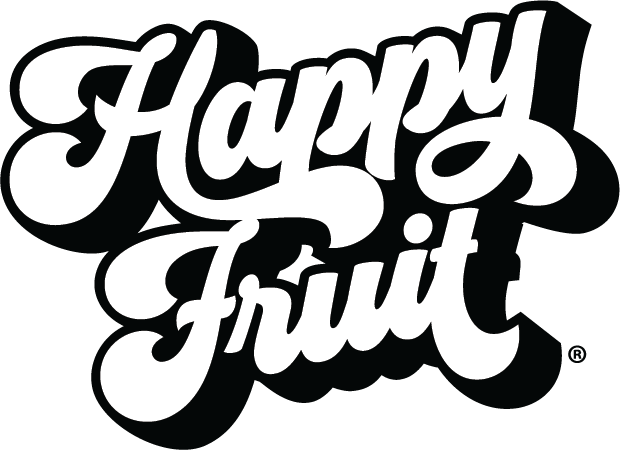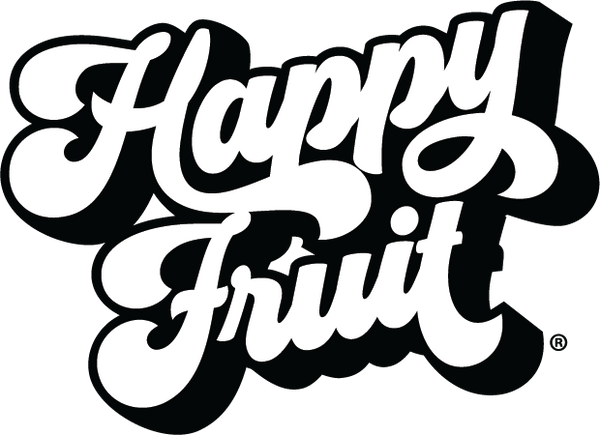The ritual use of cannabis has spanned centuries and continents, weaving its way into the spiritual lives of numerous cultures. Indigenous approaches to cannabis use and rituals reveal the plant's profound significance in fostering community, spirituality, and a deeper connection to the natural world. From the sacred ceremonies of the Amazon to the bhang-infused festivals of India, cannabis has been a cornerstone in exploring altered states of consciousness and divine communion.
This article is a concise dive into the fascinating relationship between cannabis and ritual, examining how ancient traditions and modern practices intersect. Whether you're curious about the cultural heritage of cannabis or its evolving role in contemporary spirituality, this exploration offers insight into the plant's enduring legacy as a sacred and psychoactive tool.
Historical Context of Cannabis in Indigenous Cultures
First, let's explore the evolution of the cannabis plant through the practices of indigenous healers.
How Has the Use of Cannabis Evolved Among Indigenous Peoples?
The general history of cannabis is presented together with more detailed information about its use in different indigenous cultures. Cannabis in native American has been used for the purpose of rituals and ceremonies, and for day to day use for thousands of years. It was in ancient India for instance that the food and the beverages such as wine and beer familiarized it about 1000 BCE. In the same manner, this establishes how much enshrined cannabis normally is at some point with the ethnography of some societies.
What Role Did Cannabis Play in Indigenous Medicine?
Different societies around the world are aware of cannabis’ healing abilities that many indigenous nations have used the plant in their traditional practices. It has been employed one of the earliest psychotropic plants to cure several illnesses. Here are some common uses:
- Pain relief
- Reducing inflammation
- It benefits especially from efforts to increase the intensity of religious inspiration.
How Did Colonialism Impact Indigenous Cannabis Practices?
The coming of the colonial masters changed the usage of cannabis within indigenous people. Most of the traditional practices were suppressed or changed. This lead to the alienation of knowledge and respect for the plant. Today people are trying to bring back those practices and give the green plant the respect it deserves in many ancient cultures.
Spiritual and Ritualistic Uses of Cannabis
Cannabis has long been considered more than just a plant—it's a tool for spiritual connection and healing.
How Is Cannabis Used in Ceremonial Practices?
It can be established that cannabis has been a key factor in the cultures and spiritual practices of many Indigenous people. It is frequently taken during rituals in order to pray to the spirits. For example, members of some Native American tribes [1] use cannabis as an offering during the rituals. From this practice, it is thought that the ability to commune with spirits is advanced and the experience becomes more spiritual. Sanctioned psychedelic consumption is also not lacking in various cultures where people use marijuana to maintain togetherness among the attendees.
What Is the Role of Cannabis in Healing Rituals?
It is therefore clear that while ritual use of cannabis, it has a role to play in healing. Some tribes make use of cannabis for people during visioning, which is a critical occurrence during the vision quest. These quests include food deposition and referral to the spirit realm. Since marijuana has psychoactive effects, it becomes easy for the participants to get into alter realities where they receive visions and insights. This has a close association with the existence of the human beings, and is very essential for development of personality.
Symbolism and Spiritual Significance
Most of cultures associate cannabis with the interface between thephysical and spiritual worlds. It is mostly as a psychedelic medication since its psychoactive properties enable the users get to other levels of consciousness. Much to people’s surprise, cannabis had been used in many cultures for sacred rituals, wherein they performed ceremonies in the name of their gods and spirits of their deceased. For instance Hindu rituals associates the use of bhang in festivals like Holi and Maha Shivaratri as a rapture and spiritual interaction. This reveals the essence of the marijuana to the people they are; and spiritual needs as a device of unity and humanity.
Cannabis as a Tool for Healing and Wellness
Cannabis has long been used for its medicinal properties in Indigenous communities. Let’s explore how this plant has been integrated into both spiritual healing and physical wellness practices.
How Did Indigenous Cultures Use Cannabis for Healing?
Indigenous cultures valued cannabis for its healing properties. Here’s a few of the traditional approaches:
- Herbal Remedies: Administering cannabis as a tea, or as a tincture for infections and other sicknesses.
- Ritualistic Use: Using cannabis in religious procedures for healing.
- Community Sharing: Performing together for improved mental and emotional wellness.
Is Cannabis Still Used in Modern Indigenous Medicine?
More indigenous communities have begun using cannabis in their healthcare system. This comprises of:
- Pain Management: Using cannabis for chronic pain and discomfort relief.
- Mental Health Support: PTSD and anxiety can be treated through cannabis therapies.
- Economic Development: Promoting cannabis growing as a venture to improve community health.
Community Wellness and Cannabis
For Indigenous peoples, cannabis is an indispensable commodity that fosters health. Important aspects are:
- Holistic Approaches: Using hemp-based solutions such as HHC gummies can be part of Indigenous health approaches and should not be overlooked.
- Cultural Reconnection: Incorporating cannabis into cultural activities in order to better understand them.
- Education and Awareness: Encouraging appropriate use of cannabis and its usefulness to communities.
Cultural Perspectives on Cannabis Consumption
For many Indigenous peoples, cannabis is deeply tied to their cultural identity. Let’s explore how the plant is viewed and used within these communities.
How Does Cannabis Connect to Indigenous Identity?
For many of these indigenous people cannabis is a major part of their culture. It connects people to their heritage and traditions. As the ultimate cultural products, people can use cannabis to reflect their culture and perceived reality. Such connection gives the people within the community some form of identify and pride in their region.
What Is the Role of Knowledge Transfer in Cannabis Use?
Cannabis use information is shared from one generation to the other. Old people educate the young people and remind them of the traditional practices, and use of marijuana. Such transfer of knowledge continues the culture and brings the society closer together.
Respect and Responsibility in Use
The tribes’ customs participate in cannabis utilization and recommend that it should be done decently and in order. This includes:
- Understanding the spiritual significance of cannabis.
- Using it in appropriate contexts, such as ceremonies and rituals.
- Recognizing the impact of cannabis on both individual and community health.
Legal and Social Challenges Facing Indigenous Cannabis Practices
Despite its cultural and spiritual significance, many Indigenous communities face legal and social challenges in their use of cannabis. Let’s examine some of the issues they encounter.
What Legal Barriers Do Indigenous Communities Face in Cannabis Use?
Several indigenous communities struggle against legal restrictions which limits their access to cannabis. These laws often do not distinguish psychological THC and non-psychoactive elements, thus making it questionable for probably tribes to exploit cannabis in traditional practices. Such state of affairs might foster ambiguity and impede the safeguarding of cultural practices.
How Does Social Stigma Impact Indigenous Cannabis Use?
The legal usage of cannabis in society could be of hindrances to these indigenous communities. Cannabis use misconceptualization might lead to social stigma which would influence the view of these communities. This stigma might prevent people from engaging in talk concerning their traditional practices or trying to approach for help in their health and wellness matters.
Advocacy and Indigenous Rights
Increasingly many indigenous groups are standing up for their rights, including the use of cannabis in ways which are respectful of their heritage. This includes:
- Pushing for legal recognition of traditional cannabis practices.
- In raising awareness of the cannabis culture.
- In associating with legal specialists in order to comply with relevant regulations.
The Future of Indigenous Cannabis Practices
As cannabis becomes more widely accepted, many Indigenous communities are finding new opportunities to integrate the plant into their cultural practices. Let’s explore the future of cannabis in Indigenous societies.
What Innovations Are Emerging in Indigenous Cannabis Use?
As cannabis turns to be more permissible, several tribes are discovering other opportunities to use the herb. A few innovations are:
- Producing strains that are more adapted to the local climatic conditions.
- Creating products oils and edible products that honor traditional practices.
- Utilizing cannabis in mental wellness programs within the community.
Building Sustainable Practices
For the future of cannabis within Indigenous societies, sustainability is of utmost importance. This means;
- Sustainable cultivation needs to be employed in order to conserve the environment.
- Ensuring that the cannabis use is in accordance with the land and its resources.
- Promoting the care for the earth to other people.
Spiritual Cannabis Use
The way indigenous cultures use cannabis shows its importance and flexibility. From spiritual practices to healing ceremonies, cannabis has been a part of many traditions for a long time. Events like Rastafarian rituals in Jamaica and festivals such as Holi in India highlight its cultural role. Additionally, traditional healers have used cannabis to help with various health issues, including pain and inflammation. Overall, cannabis has been significant in many societies for thousands of years. These ancient practices have influenced how we use cannabis today, leading to new products like oils and edibles that we see in the market.


